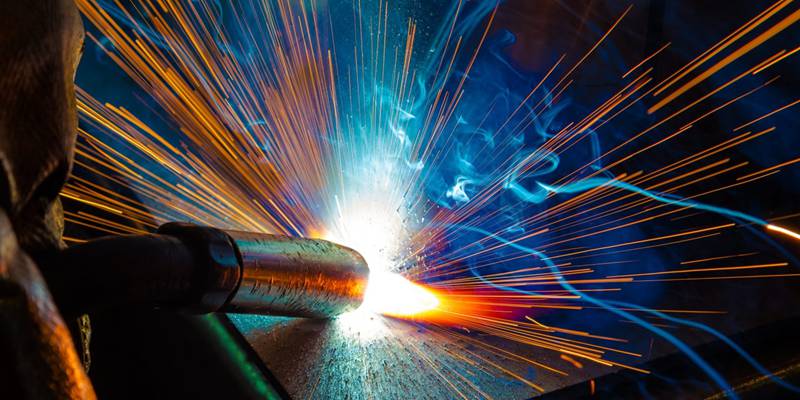Welding WPS: Common Errors to Avoid and Exactly How to Correct Them
Welding WPS: Common Errors to Avoid and Exactly How to Correct Them
Blog Article
Opening the Power of Welding WPS: Strategies for Effectiveness and Security in Construction
In the realm of construction, Welding Procedure Requirements (WPS) stand as the backbone of welding operations, dictating the essential actions for attaining both effectiveness and safety and security in the fabrication process. Understanding the intricacies of WPS is critical to harnessing its complete potential, yet numerous organizations have a hard time to unlock real power that exists within these documents (welding WPS). By diving right into the approaches that enhance welding WPS, a world of improved efficiency and increased safety awaits those ready to check out the nuances of this important facet of construction

Relevance of Welding WPS
The relevance of Welding Procedure Requirements (WPS) in the construction industry can not be overemphasized. WPS serve as an important roadmap that details the needed actions to guarantee welds are performed constantly and appropriately. By specifying vital specifications such as welding processes, materials, joint styles, preheat temperature levels, interpass temperature levels, filler metals, and post-weld warm therapy requirements, WPS offer a standardized method to welding that improves efficiency, high quality, and security in fabrication processes.
Adherence to WPS helps in achieving harmony in weld high quality, lowering the possibility of defects or architectural failings. This standardization additionally promotes conformity with market guidelines and codes, making certain that fabricated frameworks satisfy the needed safety and security standards. Furthermore, WPS documents allows welders to reproduce effective welding treatments, bring about consistent outcomes throughout various projects.
Essentially, the careful advancement and rigorous adherence to Welding Procedure Specs are paramount for maintaining the integrity of bonded structures, guarding versus prospective dangers, and maintaining the online reputation of construction companies for providing premium products and services.
Key Components of Welding WPS

Enhancing Efficiency With WPS
When optimizing welding operations, leveraging the crucial elements outlined in Welding Treatment Specifications (WPS) becomes vital for simplifying procedures and making the most of efficiency. One way to improve efficiency with WPS is by thoroughly selecting the appropriate welding criteria. By adhering to the specific guidelines given in the WPS, welders can make certain that the welding tools is set up properly, leading to premium and constant welds. Furthermore, complying with the pre-approved welding series described in the WPS can substantially lower the moment invested in each weld, eventually enhancing total performance.
Moreover, proper continue reading this training and qualification of welders in understanding and carrying out WPS can better boost effectiveness. Making certain that all group participants are skilled in interpreting and executing the WPS accurately can reduce mistakes and rework, conserving both time and sources. Frequently assessing and updating the WPS to include any kind of lessons learned or technological improvements can likewise add to effectiveness enhancements in welding procedures. By accepting the guidelines set forth in the WPS and continually looking for methods to maximize processes, makers can achieve greater effectiveness degrees and remarkable end results.
Ensuring Safety And Security in Construction

Ensuring safety and security in manufacture includes a diverse technique that incorporates numerous elements of the welding process. Welders have to be furnished with appropriate equipment such as safety helmets, handwear covers, and protective clothes to reduce threats linked with welding activities.
Additionally, adherence to correct air flow and fume extraction systems is important in maintaining a healthy workplace. Welding fumes include unsafe materials that, if inhaled, can pose major health dangers. Executing efficient ventilation steps assists to decrease exposure to these dangerous fumes, advertising respiratory system wellness among workers.
Routine equipment upkeep and assessments are likewise crucial for making certain safety and security in fabrication. Faulty machinery can cause accidents and injuries, underscoring the importance of prompt repair work and routine checks. By focusing on precaution and promoting a culture of awareness, manufacture centers can create a safe and secure and efficient work environment for their employees.
Applying WPS Best Practices
To enhance operational efficiency and make certain high quality end results in construction procedures, integrating Welding Procedure Spec (WPS) finest practices is vital. Selecting the suitable welding procedure, filler material, and preheat temperature level defined in the WPS is essential for attaining the preferred weld quality. Guaranteeing that qualified welders with the required accreditations carry out the welding treatments according to the WPS guidelines is necessary for uniformity and dependability.
Final Thought
In final thought, welding WPS plays a vital duty in making certain efficiency and security in fabrication procedures. By following imp source these techniques, services can unlock the full capacity of welding WPS in their construction procedures.
In the realm of manufacture, Welding Procedure Specifications (WPS) stand as the foundation of welding procedures, determining the necessary steps for achieving both performance and safety and security in the manufacture procedure. By defining important specifications such as welding processes, products, joint styles, preheat temperature levels, interpass temperature levels, filler metals, and post-weld warm treatment needs, WPS supply a standardized strategy to welding that enhances efficiency, quality, and security in manufacture processes.

When optimizing welding operations, leveraging the crucial components outlined in Welding Treatment Requirements (WPS) becomes vital for improving procedures and making best use of efficiency. (welding WPS)
Report this page